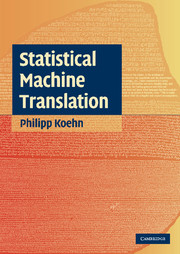Preface
Published online by Cambridge University Press: 05 June 2012
Summary
Over the last few centuries, machines have taken on many human tasks, and lately, with the advent of digital computers, even tasks that were thought to require thinking and intelligence. Translating between languages is one of these tasks, a task for which even humans require special training.
Machine translation has a long history, but over the last decade or two, its evolution has taken on a new direction – a direction that is mirrored in other subfields of natural language processing. This new direction is grounded in the premise that language is so rich and complex that it could never be fully analyzed and distilled into a set of rules, which are then encoded into a computer program. Instead, the new direction is to develop a machine that discovers the rules of translation automatically from a large corpus of translated text, by pairing the input and output of the translation process, and learning from the statistics over the data.
Statistical machine translation has gained tremendous momentum, both in the research community and in the commercial sector. About one thousand academic papers have been published on the subject, about half of them in the past three years alone. At the same time, statistical machine translation systems have found their way to the marketplace, ranging from the first purely statistical machine translation company, Language Weaver, to the free online systems of Google and Microsoft.
- Type
- Chapter
- Information
- Statistical Machine Translation , pp. xi - xiiPublisher: Cambridge University PressPrint publication year: 2009

